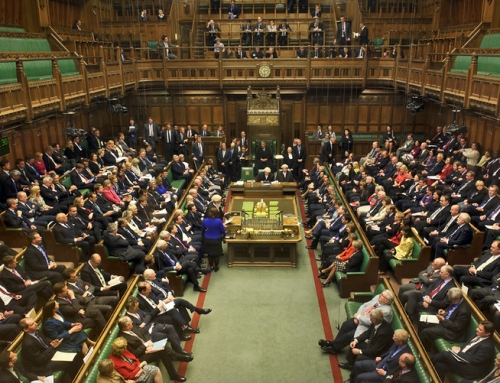This is a report of the contributions to the Comprehensive Future Annual Conference October 13 2007 in Birmingham, chaired by David Chaytor MP for Bury North and Chair of Comprehensive Future.
Estelle Morris – Baroness Morris of Yardley
Pro Vice Chancellor Sunderland University. MP for Birmingham Yardley 1992 – 2005. Parliamentary Secretary of State (School Standards) 1997 -98), Minister of State for School Standards 1998 -2001 and Secretary of State for Education and Skills 2001 -2.
Comprehensive Future focuses on admissions but changing admissions is not the only lever to bring about comprehensive education.
In recent history it seems we have considered two roles for schools – to provide competent fulfilled citizens able to take their place in the world and to build effective communities. In the 50s it seemed the concern more was to ensure individual opportunity, in the 70s to empower communities. Now both arguments run.
Our focus after 2002 seemed to be to get poor children into ‘better schools’, seeming to go along with a policy of escapism and to accept we could not have a system where all schools were able to deliver for their children. And for ‘better’ schools we meant ‘middle class’ schools. We never suggested that middle class children could be bussed to some of the really excellent inner city schools!
The greatest divide in education outcomes is still social class. We have still not managed to provide the best educational outcomes for poor children. We can band to get a cross section of ability or social class but surely it is important to ensure that teachers do their best for the children they have in front of them. While we argue about admissions we are not focusing on the question of how we raise attainment for poor children.
We have to accept the vital role that schools play as part of their community. Parental choice can work against this. The possibilities offered by the extended schools programme means that schools can reconnect with their communities. Schools are uniquely placed to break down barriers.
I want to explore some ideas – not definite proposals but just some thoughts to consider. Would elongating primary school offer a way of solving some of our problems? If the divide was not at 11 but 14, we could offer what we offer now as a curriculum up to 16 to 14. We could end selection at 11 and remove the hurdle of GCSEs at 16. At 14 young people are at a good stage in their maturity. Students could choose their paths in 14 -19 establishments. We could have academic or vocational routes. It will be unfortunate if problems with the current diplomas lead to a more divisive system and instability.
The new Department for Children, Schools and Families can combine supporting the two roles of promoting schools where individual children can succeed and in their role in the community. Clearly there is still work to be done in tackling the divide of social class.
Chris Storr
Director of Education Roman Catholic Diocese of Southwark 1982-2001. Member former Chairman, Kent Schools’ Organization Committee; Research Associate, Centre for Research and Development in Catholic Education, Institute of Education, University of London 2004 to date.
It is important to understand the role of the Catholic church in the community and in the search for social justice and in the provision of education in this country.
The Church is involved in a huge range of social support systems for example in prisons, working with the homeless and supporting minority ethnic groups. The church has been involved in providing schools for many years. In recent times from 1965 onwards there have been many public statements from the church authorities setting out the responsibility of the schools to serve the needs of the poor and weakest in society. In 1997 for example in a strong message to the then Tory government the Church said that schools need to have regard to the common good and that ‘unlimited free markets’ act against the poor.
Statistics show that the fsm intake to Catholic schools is similar to non-faith schools.
Currently there are concerns about the need for faith schools to take children not of the faith but a look at the history of school reorganization does throw some useful light on this.
There are two main reasons why many Catholic schools have exclusively Catholic rolls. First, if the Church wishes to set up a new Catholic school there has to be evidence that there are sufficient Catholics in the area to fill it. Second, in the 1980s, when the declining birth rate led to large scale falling rolls nation-wide, the church authorities agreed to take out surplus places in Catholic schools as many LEAs and non faith schools were concerned about ‘poaching’ from their schools. There were many Catholic school closures and amalgamations in dioceses across the country –Westminster, Southwark, Liverpool, Salford, Leeds and Birmingham for example.
Diocesan authorities are keen to ensure admission policies are fair. In any system there are schools which cause embarrassment. In many part of the country there are Catholic schools which are full of ethnic minority children. It is important to look at each example on its merit. The trust deeds of Catholic schools will require them to further the interests of the Catholic church, that is the purpose for which the schools are established in law and the governors are obliged to follow this.
Schools should serve the community. If there is an identifiable Catholic community then this is what the schools exist to serve.
Tim Boyes
Headteacher Queensbridge School, Birmingham. Tim has taught for 20 years in inner city Birmingham and been a, head teacher for 4 years.
These are the reflections of a Birmingham Head on admissions and the comprehensive dream. There is much to be positive about in the past 10 years of policy and practice in education. Experience of three inner ring Birmingham schools reflects huge improvements in standards, the clear fruit of improved funding for challenging inner city schools. The examples of Aston Manor and Holte Schools reflect impressive achievements despite being at the “bottom” of the market, and despite the additional barriers created to school self confidence by the Specialist Schools and Academies Trust. Although they are in the top two percent nationally for CVA such schools will never attract communities from other areas so great is the stigma of school’s characterised by particularly poor neighbourhoods.
In contrast to these schools Queensbridge in Moseley is located amidst some expensive housing and is unusually mixed, socially and ethnically. In a good location to fulfil the comprehensive dream it is however a thought provoking example of a school depressingly hampered by the market place within which it sits. Looking at schools little more than a mile away Queensbridge, a co-educational school with 72% boys and standards on intake in the bottom 20%, is overshadowed by some powerful neighbours. These include two grammar schools, two very popular girls’ schools, Birmingham’s most over-subscribed Catholic secondary school and a little further away a foundation specialist school that uses the chance to select 10% of its intake with an entrance exam and then uses sibling criteria to develop a growing pyramid of middle class children from beyond it’s immediate neighbourhood.
Such a situation helps to perpetuate injustice with schools serving the poorest communities perceived to be the least desirable left with the greatest burden of need having the hardest job recruiting good staff. Queensbridge School is made all the more interesting as it has seen a 100+% increase in 5 x A* – C grades in the past four years. ( 30 % in 04 – 61% in 07) and OfSTED has just described it as “good with outstanding features”. One possibility for the future therefore is that the middle class neighbourhood in which it is located starts to choose the school and the poorer inner ring families that have traditionally sent children to the school fail to get in. Another observation would be that professional families who could be an asset to the school lose the excuse of low standards but then discover they simply don’t want to have their children in such an environment.
In a very positive recent OfSTED report Queensbridge was graded with 1’s and 2’s throughout. Race equality and the tackling of discrimination was graded as “Excellent” and yet the majority of pupils spend the bulk of their time in ethnically discrete groups and it would be almost unheard of for a white British child to have entered the home of a child from a Pakistani or Somali family.
Neither OfSTED, the DCSF who back faith schools or the teaching profession know adequately how to articulate what schools need to be centred on. The failure of professionals who are immersed in working with the consequences of poverty and injustice to join in BEING part of the answer by committing to living inclusively through comprehensive education highlights this vacuum of language and purpose.
David Cameron claimed to have a good education that he was proud of. Clearly he did not have a good education as he seems not to realise what he does not know! The challenge for those committed to social justice through good comprehensive schools for all is to live the reality that we are all interdependent. Harm done to someone else harms us. This is ultimately a spiritual or moral position that needs to be articulated more clearly if schools like Queensbridge are not going to sit damaged at the “bottom of the market”.
Chris Healy
Headteacher Balcarras School Cheltenham. Began teaching in boys’ secondary modern in Southend, in 1973, then a grammar school in Nottingham. Since then comprehensives in Nottingham, Milton Keynes , deputy head at Tewkesbury School. Head John Masefield High School in 1991 and Balcarras in 1996.
It is really important to speak up for comprehensive schools. Gloucestershire does not have a comprehensive system of education. There is one grammar school in Cheltenham, 2 in Stroud and 4 in Gloucester. The ripples of selection go way beyond this, children travel to Pates in Cheltenham for example from Oxford, Bristol and Worcester.
Balcarras school, on the edge of Cheltenham was a secondary modern in 1949, which became comprehensive in 1986 in 1991 it became a GM school and in 1998 a specialist technology college. It is now oversubscribed.
Pate’s grammar is extremely selective taking only 4 forms of entry. Cheltenham children who fail to get in to Pate’s may try for Gloucester grammars. So the area is an example of the pecking order of schools. Now the new School Admissions Code which gives parents the right to know the results of tests before expressing a preference and stops schools giving priority to parents who put them as first preference means this pecking order will be exacerbated. This will mean parents who wanted comprehensive education will be ousted from comprehensive schools by parents who really wanted a grammar school education.
This indicates an attitude on the part of Government that grammar school education is best. The DCSF seems to have been persuaded of this by lobbying from grammar schools and the influential Sutton Trust.
Now there is a possibility of children facing further entry tests as one ‘comprehensive’ plans to select 10% by language and 90% by fair banding. So the pecking order will become even more stratified.
It seems that after 10 years of a Labour government people are even more ready to denigrate comprehensive schools. The headmaster of St Paul’s school is an example. He referred recently to ‘a dreadful one size fits all philosophy’ and claimed that the comprehensive experiment has not delivered academically. Now we have a School Admissions Code which protects grammars in a falling market.
Does this Labour government not really believe comprehensive education is worth saving?




